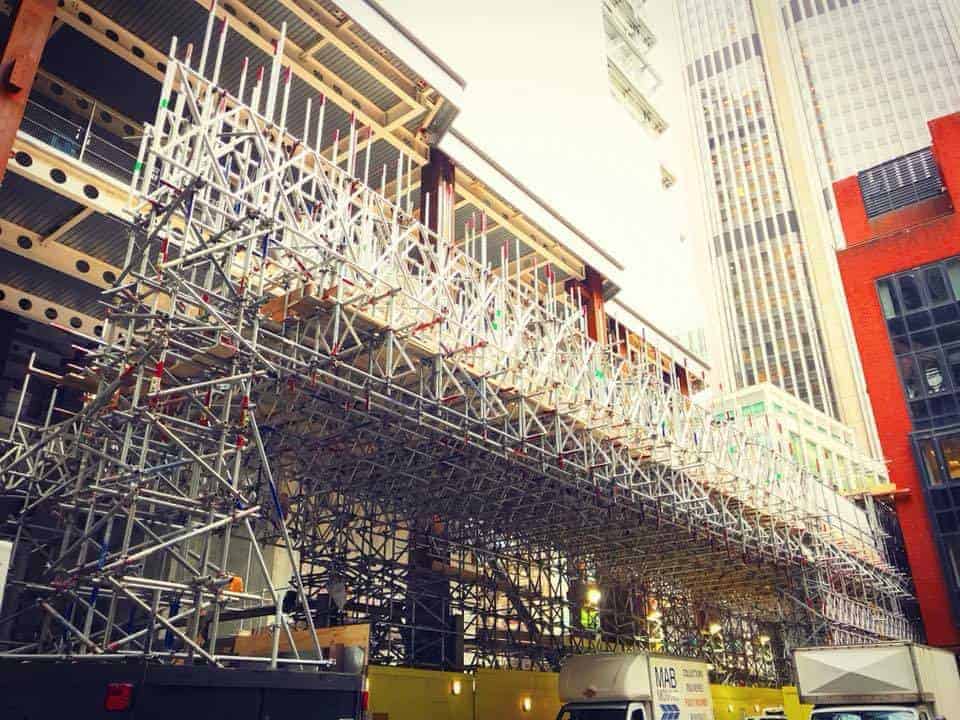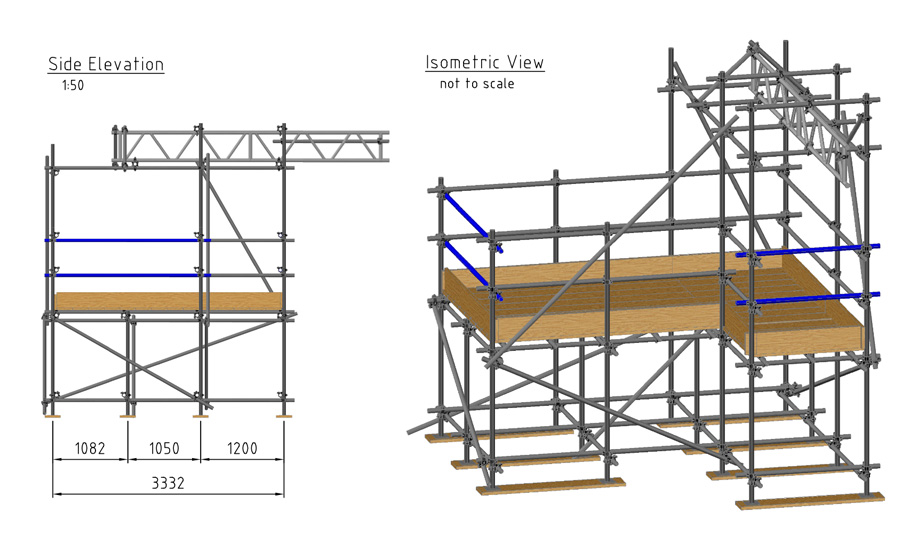

(a) a casing below ground or water level whether or not it is designed to contain air at a pressure greater than atmospheric pressure,
#Scaffolding design requirements code#
“ Building Code” means Ontario Regulation 403/97 made under the Building Code Act, 1992 “boom” means the projecting part of a backhoe, shovel, crane or similar lifting device from which a load is likely to be supported “blocker truck” means a truck that weighs at least 6,800 kilograms and has four-way flashers and a mounted flashing arrowboard sign “approved”, in relation to a form, means approved by the Minister
#Scaffolding design requirements professional#
(b) if no allowable unit stress is assigned under clause (a), the allowable unit stress for the material as determined by a professional engineer in accordance with good engineering practice (a) the allowable unit stress assigned to a material by the standards required under the Building Code, or “allowable unit stress”, in relation to a material, means, (b) sufficient to protect a worker from occupational illness or occupational injury,Īnd “adequately” has a corresponding meaning

(a) sufficient for both its intended and its actual use, and “adequate”, in relation to a procedure, material, device, object or thing, means, Suspended Platforms and Scaffolds and Boatswain’s Chairsĭerricks, Stiff-Leg Derricks and Similar Hoisting Devices Protective Clothing, Equipment and Devicesįorms, Formwork, Falsework and Re-shoring Using a mobile app has been shown to improve the quality of scaffold inspections thanks to the consistent and logical step by step process that ensures all aspects of the inspection are completed and logged.Accident Notices and Reports under Sections 51-53 of the Act To inspect system scaffolds the person must have completed the basic scaffold inspection course and have experience and knowledge of the system to be inspected. A CISRS SITS (Scaffold Inspection Training Scheme) qualification will remain valid for a 5-year period.

Scaffolders holding the appropriate level of CISRS qualification are also qualified to inspect scaffolding. This is usually understood to be someone holding the relevant Construction Industry Scaffolders Record Scheme (CISRS) qualification.Ī CISRS scaffold inspection qualification would be sufficient to inspect a “basic” scaffold structure, whereas a more complex structure requires a CISRS Advanced Scaffold Inspection card and extensive experience. The HSE guidance states that scaffolding inspections should be carried out “by a competent person whose combination of knowledge, training and experience is appropriate for the type and complexity of the scaffold”.


 0 kommentar(er)
0 kommentar(er)
